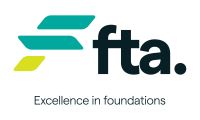If you have a contract or subcontract with a company that has entered administration or liquidation or an individual who becomes bankrupt you need to know and understand your rights, as well as steps that may be available to limit potential loss.
We’ve developed this overview, with a focus on claiming amounts owed to you once your client is in administration, liquidation or is bankrupt.
In these kinds of situations, time is of the essence.
If you’re a Master Builders’ member and find yourself in this situation, make sure you contact us immediately. We can give you general information and our legal arm, Members Legal, can provide advice tailored to your situation.
Steps to take
- Step 1 Determine what amounts you are currently owed and what work you have carried out, but not yet invoiced for.
- Step 2 Refer to your contract or subcontract to determine whether it gives you the ability to terminate upon a party entering administration or liquidation. You should also consider what obligations you have to protect any works done to date and your rights to collect equipment and materials you may have on site.
- Be careful about terminating the contract without receiving legal advice as it can affect your rights to issue certain types of claims and other matters under the contract.
- Step 3 If you are owed money under your contract or subcontract there are a number of different steps you can take to help secure payment. Consider these options and which options might be best for your situation.
Subcontractors' charge
A subcontractors’ charge is a statutory right under chapter 4 of the Building Industry Fairness (Security of Payment) Act 2017 (Qld) that allows a contractor to make a claim for payment up the chain. It can be used by any party in the contractual chain so long as the charge goes ‘up’ the chain, for example to a head contractor or Principal.
A subcontractors’ charge can be useful in circumstances where your direct contractor doesn’t have the ability to pay you, but where their client, usually the head contractor or Principal, owes money to that company.
However, a charge will only be useful if the Principal, or other party ‘up’ the chain, owes money. If all amounts have already been paid, and no security is still being held, then there will be no money for the charge to attach to.
If there are multiple charges issued and not enough money to satisfy them all in full, then all valid charges will receive payment on a pro-rata basis, it’s not a case of first charge in line.
We can give you advice on whether you are eligible to issue a charge and the process involved, however, given the complexities involved in issuing a charge, and the consequences of an invalid charge, we recommend you seek independent legal advice to assist you to prepare the charge.
Proof of debt
If a company enters administration or liquidation or if a person declares bankruptcy the first step in attempting to get payment is to lodge a proof of debt.
Payment will only be made if a proof of debt is completed and lodged correctly and if there are funds that are available to pay unsecured creditors, which is not often the case as unsecured creditors are often last in line.
After lodging a proof of debt, the next steps will depend on whether the company is in administration or liquidation or if the person is an individual who has entered bankruptcy.
A copy of the correct form will usually be issued by the administrator/liquidator/trustee in bankruptcy and should be completed with sufficient detail to support your claim and attach evidence to support the claim such as copies of invoices.
Be very careful about issuing a proof of debt if you wish to pursue a subcontractors’ charge. If you issue a subcontractors’ charge and then also issue a proof of debt you will risk your secured creditor status under the charge.
We can advise whether proof of debt is the best option for you.
Building Industry Fairness Act (BIFA)
Generally, taking steps under the Building Industry Fairness (Security of Payment) Act 2017 (Qld) will only be commercially worthwhile if the company you are claiming against has the ability to pay an adjudicated amount.
If a company is in administration or liquidation or a person is bankrupt it is likely that they do not have the ability to pay. In these circumstances, BIFA is not a recommended action.
Payments made to date
If a company you contract with enters liquidation, be mindful that a liquidator may make a claim against you that you received an unfair preference payment.
An unfair preference payment is any type of payment made by the company where:
- the payment was made within 6 months of the ‘relation back day’ (which is the day that liquidation commenced);
- the company was insolvent at the time of the payment; and
- you received a better return than you would have.
We can assist you in responding to a clawback claim from a liquidator but time will be important.
We recommend that you contact us and/or seek legal advice if you do receive a demand from a liquidator asking that you pay money back.





